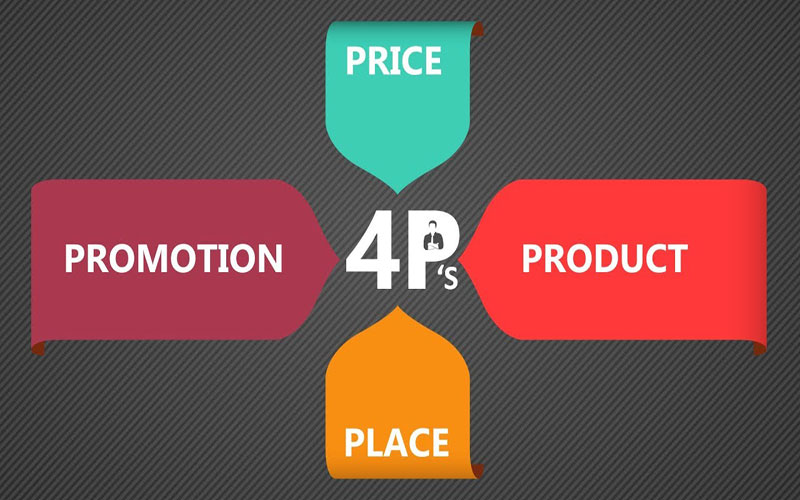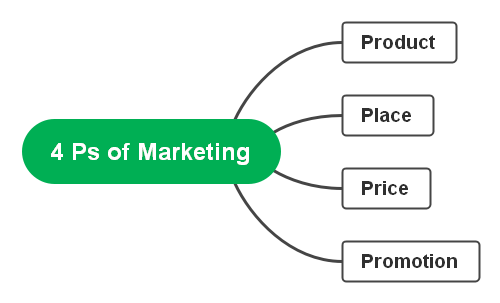The 4 Ps of Marketing: Simple Guide with Mind Map Examples
The organizations utilizing the 4 Ps determine some critical elements for their venture, including what the purchasers want, how their service or product addresses or fail to meet those requirements and expectations, how their service or goods are seen globally, how they stand apart from their competition, and how they engage with their clients. In this article, you will learn about the 4 Ps in marketing.
Introduction
Marketing Mix, a term devised by Neil Borden, is the fixings that infuse together to promote and capture the USPs that are the unique selling points of the brand or product. The USPs focus makes it stand apart from its competition. The thoughts and ideas behind Borden's model were refined over the years until E. Jerome McCarthy diminished them to 4 major components called The Four Ps. This proposed grouping has been utilized by the companies involved in marketing, branding, and companies that do websites development worldwide.
Since the 1950s, the 4 Ps have been around; as the business and industry of marketing has advanced, the ideas of physical evidence, concepts of people, and process have become more of a significant part of advertising a product. The marketing 4 Ps are the 4 fundamental elements engaged with supporting a service or good to the general public. The 4 Ps include:
- Product (service or good);
- The price (what the buyer pays);
- The place (the area where a product is showcased);
- And promotion (the advertising).

Source:365 Careers
What Are The 4 Ps and How Do They Work?
The 4 Ps are also known as the marketing mix, the marketing 4 Ps that are place, price, product, and promotion) are the four mainstays of an effective strategy of marketing. They get your item before the potential buyers at the correct price.
Product
The first of marketing 4 Ps is the product. A product can be an indefinite service and a definite good that satisfies a want or need of the purchasers and consumers. Whether you sell products made out of wood, custom pallets, or offering facilities, you might have a basic and vivid idea of what your product is and what makes it exceptional before you can efficiently market it.
A product can be thought-provoking, attractive, and convincing enough that the consumer accepts that they need to have this product and also establishes a new demand. To be successful, the marketers need to comprehend the existing cycle of a product, and the people owning the businesses need to sort the planning for managing the goods at every step of the life cycle. The kind of goods partially directs to the charges where they should put it, or how much they charge for and how they should advance it in the commercial center.
Price
When a firm command of the goods to be offered to the consumers is established, the next step is to settle on some decisions like the price. The determination of prices will affect overall strategies of marketing, demand, and supply, and margins. Conceptually similar products and brands should be situated contrastingly dependent on fluctuating price points, while the consideration of price elasticity may impact our next two Ps.
Price is the expense that the consumers or purchasers pay for an item or service they buy. Marketers should interface the price to the item's perception. However, they additionally should consider supply costs, contenders' prices, and occasional limits.
The marketeers likewise need to decide when and if limiting is suitable. A discount can attract more clients; however, it can likewise give the feeling that the item is less restrictive or, to a lesser extent, a luxury as compared with when it is high priced.
Promotion
We have a product and a price with us, and it is an ideal opportunity and the correct time to promote the item. Promotion takes a gander at the numerous ways marketing organizations spread important details and information of the product to buyers and distinguish a specific service or product. Promotion incorporates components like email marketing, video marketing, search engine optimization, social media marketing, advertising, public relation, and that's only the tip of the iceberg. Each touchpoint should be backed up strongly by a well-positioned brand to increase the return of investment genuinely.
The objective of product promotion is to uncover to purchasers why they need it and why they should address a specific cost.
In general, marketers tie placement and promotion components together to reach out to their targeted audience.
Place
It is crucial at that point; to assess what the ideal places are to change over the possible potential customers into real customers. Today, even in times and situations where the real exchange does not occur on the web, the underlying place potential customers are converted is on the web.
At times this might refer to placing the item to correct and particular stores. However, it also refers to placing the product in the display section of the stores. At certain times, the item's placement might also refer to the demonstration of the reminding the item over the TV, movie, or even the website pages.

Conclusion:
Clearly, characterizing product, price, promotion, and place should all be viewed and considered when building up a marketing strategy for any brand or product. Regardless of whether managing a startup or setting up a business, adjusting these four components is basic to marketers striving to situate a specific product or brand in the marketplace.
Now when you have learned about every one of the 4 P's of marketing individually, make sure to adjust them all together and balance them in your business to fabricate a fine marketing mix that guarantees you have an attractive service or product that your clients can discover and purchase at a competitive price.
